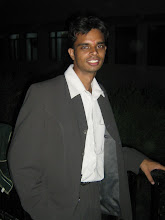Different Maratha (also called as Rastriks or Maha-rathis or Mahrattas) rulers during Medieval period (before 12th century) include Satavahana, Rashtrakuta, Yadhav-Jadhavs। They re-united into historical prominence under the leadership of Chhatrapati Shivaji in the 17th century. Shivaji Maharaj, born into the Bhosale clan of Marathas, secured an independent state by dint of lifelong struggle and thereby founded an empire, the remnants of which lasted until the independence of India in 1947. The state thus founded by Chhatrapati Shivaji attained its zenith under the tutelage of the Peshwas in the 18th century, extending from the Indus in present-day Pakistan to Orissa in the east and from the Punjab to central Karnataka in the south. The kingdom of Thanjavur in present-day Tamil Nadu was also ruled by a Maratha dynasty, albeit outside the ambit of the main Maratha Empire. At its peak, the Maratha Empire established a protectorate over the mughal emperor and paramountcy over the numerous Rajput chieftains of Gujarat, Rajasthan, Central India and elsewhere. They had also managed to bring Punjab under their sway and end Muslim rule there and keeping the field open for the Sikhs. This vast empire declined gradually after the third battle of Panipat (1761); by 1818, all of present-day India had fallen to the British East India Company.
Chhatrapati Shivaji Maharaj gave an opportunity to fight with enemies to the people of all the castes in Maharshtra. For him, everybody was a Maratha, who helped for the freedom. So for him all his soldiers, including his Muslim soldiers (Who were in large numbers in his navy and in artillery) were Marathas.
It should be noted that Peshavas, who were Chitpavan Bramhins were also known as Maratha. The Muslim Queen of Ahmednagar Chandbibi was also known as a Maratha.
Later, Bramhins stopped to call themselves as Maratha.Today in Maharashtra a specific community who is politically strong, calls themselves as Maratha. They have 96 clans. Most of the clans are newer (Did not existed before Shivaji Maharaj) and only few clans are ancient which I will like to note here: Yadav/Jadhav, Morey, Kadam (Kadamb), Salunkhe, Rathod, Chavan, Shinde, Shelar, Sawant, Pawar, Kalchuri, Sisodia etc.
The cultivaters of Maharashtra were known as Kunabis most of whom started themselves call as Marathas before one hundred years. This increased the number of Marathas rapidly in Maharshtra. So they became politically stronger. But the Marthas are divided in several groups namely Deshmukhs, 96 Kulis, Common Marathas, Kadus and Kunabis. They do not intermarry. There are geographical divisions also and they generally do not marry outside their region.(Like a Maratha of Sangli district marries with the maratha of surrounding districts of Satara and Kolhapur but not with the Marathas of Pune district. Which is just 110 Km. from Satara).
It is said that when a Kunabi becomes stronger, he become a Maratha, When a Maratha becomes stronger he becomes a Patil, When a Patil becomes stronger he becomes Deshmukh.
Deshmukh was the highest Designation, like District Collector in this era while Patil is the chief of a village. Generally, Marathas are not interested in the history before Chhatrapati Shivaji Maharaj. So for them, history starts with Shahaji Maharaj and ends with Sambhaji Maharaj. It can be proved that their ancestors were followers of Jainism but they will strongly deny it, even if one presents geneological proofs.
Monday, July 27, 2009
Subscribe to:
Comments (Atom)
